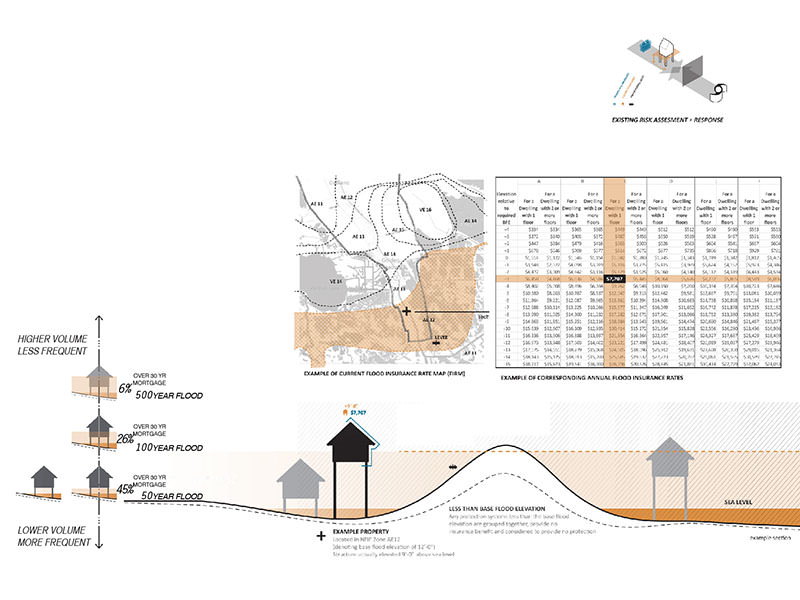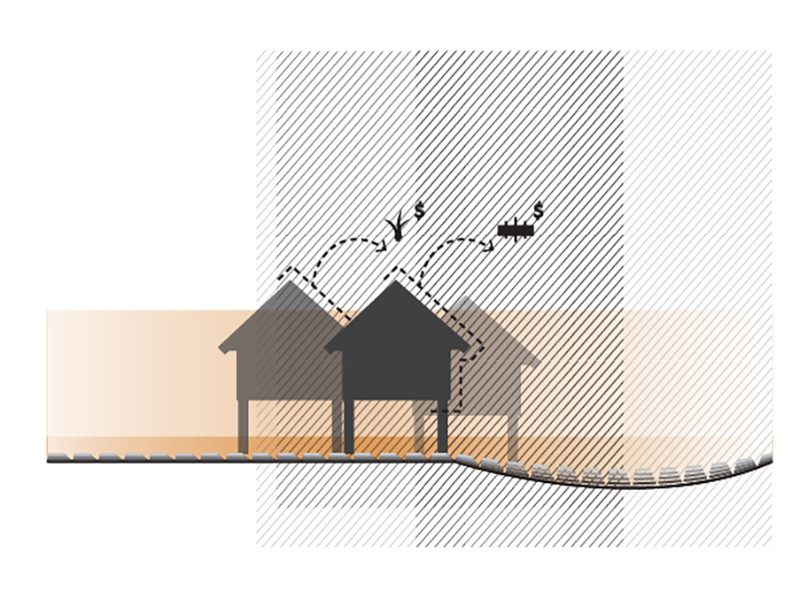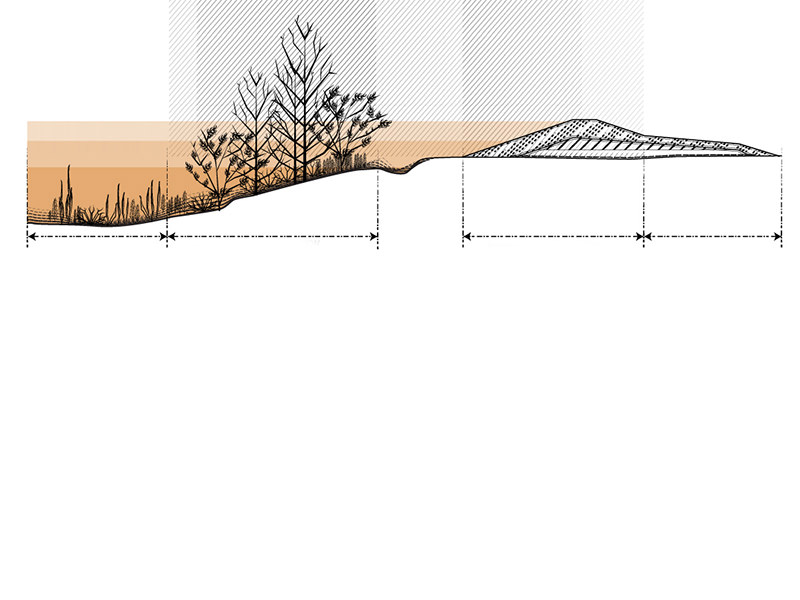Flood and wind damages to coastal communities result in increased costs of natural disasters at the local, state, and
national scale. Development, by its nature, often accelerates risk as cities encroach on coasts; as coastal regions become
more densely populated and expansive, collective risk of a developed area increases as well. Additionally, the tendency to
maintain unsustainable building practice is exacerbated by established insurance procedures that have not evolved with
societal knowledge and information. Therefore, this Dual Framework addresses issues facing the future of the National
Flood Insurance Program and proposes an integration of risk data with incentivized individual and community design
responses.
Developments to the information regarding hydrologic and meteorological conditions, land use distribution, and structural
protection measures are continually evolving. However, in locations where urbanization trends, risk mitigation strategies,
and coastal barriers are continually transforming, other factors must also be considered. Urban development patterns,
population trends, emergency response, wetland ecologies, and coastal monitoring systems are also relevant.
For proportions of coastal communities that are experiencing population growth, incentivized design options begin to
consider the shared risks of the wider populace. Cities with continual gain in demographics require stabilization of
protection systems; individual property owners within these municipalities are offered the option to contribute to these
reserves as an alternative to continually raising an individual structure. On site sewage and stormwater management
practices are encouraged to reduce pressure on nearby drainage and pumping infrastructures. Design strategies that
incorporate continual existing and potential future habitat migration are rewarded with reduced premiums to homebuyers.
Design actions that reduce subsidence and maintain wetland ecosystems are especially encouraged. Following repeated
flood events, unoccupied portions of neighborhoods and cities can be transformed through shared costs of the benefiting
populace. Continually updated and technologically credible risk information is integrated with individual and community
design responses to provide a Dual Framework Strategy contributing to an evolution in the National Flood Insurance
Program.
PROJECT COMPLETED WITH THE GENEROUS SUPPORT OF THE LSU COASTAL SUSTAINABILITY STUDIO











